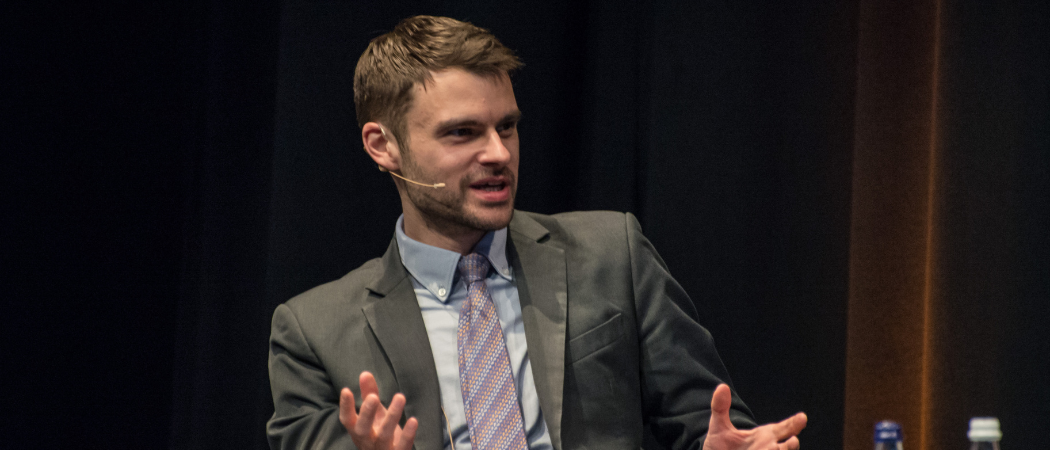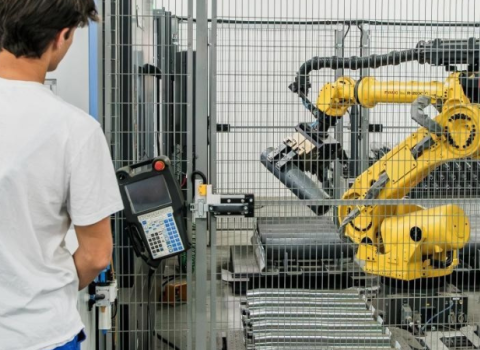We made a list of the programmes’ greatest hits. Do they justify nearly €300 billion of investment over four decades?

David Matthews is International Editor of Science|Business. Photo credits: Jeroen Vanhecke
Last year, when visiting Germany’s Sprind innovation agency, I was asked a question that had me stumped: do the EU’s research Framework Programmes, the current one being Horizon Europe, actually “work”?
At Science|Business, we cover the Framework Programmes, now 41 years old and worth more than €10 billion a year, in exhaustive detail. But I had no clear answer – or unclear answer, for that matter - to this disarmingly obvious query.
It’s a crucial, timely question, because the next Framework Programme, FP10, which is set to start in 2028, is facing unprecedented upheaval, and risks being broken down and reassembled as part of a huge new overarching Competitiveness Fund. We won’t know the details until the summer, but this could mean much more top-down control of research in the service of European economic and military might. Are we radically rejigging a programme that is doing well, that is failing, or somewhere in between?
This question has been asked many times before, of course. Officially, according to the European Commission, the Framework Programmes are a roaring success, largely based on performance metrics. The final assessment of Horizon 2020, the predecessor to Horizon Europe which ended in 2020, mainly consists of hundreds of pages of statistics, tables upon tables of numbers about patent quality, articles published and models of GDP impact. Similarly, the interim evaluation of Horizon Europe is also a number-fest, with only a few, rare references to tangible outcomes, such as fuel cell buses or new antibiotics.
But this stats dump approach does not seem to have been particularly convincing, even to the Commission itself. Otherwise, why would it be considering a radical reorganisation of the Framework Programmes, and ruled out a serious budget increase for FP10?
Perhaps it’s not surprising that metrics-based arguments haven’t been successful. While they have the sheen of being objective and scientific measures, metrics such as citations, patents, articles and so on are only tenuous proxies for the real-world, life-improving inventions and ideas we want from public R&D programmes.
The Commission claims huge economic benefits from the Framework Programmes - €429 billion from Horizon 2020 over the long term. But other sectors, from education to infrastructure, can also summon abstract economic modelling forecasts claiming huge returns on public spending. Finance ministers’ desks are no doubt strewn with this kind of modelling reports.
So if numbers alone can’t satisfactorily answer the question posed to me at Sprind, what can?
Results, not metrics
The answer, I would argue, lies in how European research policymakers talk about the US Defense Advanced Research Projects Agency (DARPA).
Both the recent heavyweight reports by Mario Draghi and Manuel Heitor recommended the Framework Programmes adopt some version of a DARPA model. Sprind itself has taken at least some inspiration from DARPA too. Every Brussels panel, keynote and report takes it as axiomatic that DARPA is a success story to be emulated.
But why? I don’t think I’ve once heard anyone reel off Commission assessment-style statistics about DARPA’s estimated contribution to US GDP, say, or the number of highly-cited patents it produces. I tried to find these numbers, but couldn’t.
No, the reason that Europeans fawn over DARPA is simple, I would argue. It’s because the agency is perceived to have helped create multiple, world-changing inventions the average person has heard of: the computer mouse; GPS; weather satellites; Arpanet, the precursor to the modern internet; stealth bombers; the BigDog quadruped robot; autonomous vehicles, and so on. Not to mention that DARPA’s client, the US military, remains lethally effective.
Bell Labs, which after the Second World War went on a stunning streak of inventiveness, creating the transistor, the laser, and the silicon-based solar cell, is another example. Again, like DARPA, no one revers Bell Labs because of its citation count, but because of its record of invention.
The way organisations like DARPA and Bell Labs are universally lauded in Brussels and beyond shows that we ultimately care about household-name results, not annexes of metrics. A list of top inventions can be a crude but effective yardstick of success, I would argue, and, judging by unwavering US political support for DARPA, a much more effective lobbying tool than metrics.
The EU’s greatest hits
What, then, are the Framework Programmes’ greatest hits? What is the EU’s equivalent of DARPA’s Arpanet, its BigDog?
We discussed this internally at Science|Business, where we live and breath the Framework Programmes. While there were a couple of ideas, we weren’t exactly overflowing with suggestions. “Big commercial breakthroughs have been rare,” as one colleague put it to me. However, official and informal sources in the Commission did send on several ideas and reports.
So, what do we have to show for 41 years, over €280 billion, and nearly 130,000 projects? A drumroll, please:
- GSM (Global System for Mobile Communication). FP1 and FP2 were crucial to the commercial development and standardisation of the system that underpinned early mobile phones, which gave Nokia and Ericsson a near monopoly over the market. Their dominance has faded, but they remain some of the world’s biggest telecoms players.
- The MP3. Invented in the early 1990s largely by Germany’s Fraunhofer Society, the MP3 format allowed a massive compression in the amount of data needed to store audio, paving the way for online music boom. In part, this was due to a European Commission grant that created the German research alliance responsible.
- mRNA vaccines. . . partially. The German pharma firm BioNTech, which rode to the rescue during the pandemic, received support from the fifth, sixth and seventh Framework Programmes that allowed it to mature mRNA technology. The Commission explicitly cites mRNA as one of its big success stories. However, DARPA itself is normally afforded a bigger role in the mRNA story, and BioNTech was founded after key early breakthrough mRNA papers in 2000 and 2005. Claims that the EU created mRNA vaccines should be taken with a “large dose of salt,” one former Commission official told me, as German national funding was much more important to BioNTech.
- The Ebola vaccine. . . or one of them at least. The Innovative Medicines Initiative, supported by Framework Programmes since FP6, was one of the bodies behind a two-dose Ebola vaccine. Still, though, it’s only one of several Ebola vaccines.
- Digital Audio Broadcasting. This digital radio standard also emerged from a European funded project in the late 1980s and early 1990s, although it’s only one of several global standards for digital radio.
- The genetic sequencing of yeast. In 1992, yeast became the first non-bacterial organism to have its genes fully mapped. This has allowed scientists to create new strains of yeast for low alcohol brewing, for example. But perhaps even more importantly, it paved the way for the sequencing of the human genome in 2003.
- Perovskite solar cells. While not exactly a household name yet, these hyper-efficient solar cells could drive down the cost of renewables even further. It was an European Research Council (ERC) project that led to a major breakthrough in their development in 2012. But their lifespan is still too short for mass adoption yet.
- The first ever image of a black hole. While not quite an invention as such, this arresting image, partially the result of ERC funding, made global headlines when it was released in 2019.
It’s also worth noting that last year, the Commission released a document called 40 Stories, 40 Years, a list of its achievements. But none of them, with the exception of mRNA vaccines, is well known, I would judge. Some, like mRNA cancer therapies, are promising, but not yet proven. The EU has also released mammothreports on its research partnerships, but I couldn’t find any tangible, well-known technologies or ideas listed therein. Instead, “success stories” are typically waffly anecdotes about participation, synergies, working groups and the like.
For comparison, the US National Science Foundation, which has a fundamental science focus and a roughly comparable budget to Horizon Europe, has compiled a similar list. It claims credit for 3D printing, MRI, laser eye surgery, and even Duolingo, among other things.
Over to you
Now, the above list of the Framework Programmes’ greatest hits is no doubt incomplete; Science|Business readers, over to you. What other stories are there of EU-funded research helping to create household name technologies? Please do get in contact and we can expand the EU’s roll-call of inventions, or strike them off if you feel the Framework Programmes gets too much credit.
There are plenty of caveats here, of course. I’m not suggesting we crudely compare DARPA’s list of inventions with the Framework Programmes’ list and declare one the winner.
The Framework Programmes aren’t backed by the procurement muscle of the US military, as DARPA is, to turn prototypes into mass produced technology, although you could argue this is a failure of the EU to link up its R with its D.
The European Research Council gets a bit of a pass: it has only been around since 2007, so has had far less time to see its discoveries morph into real-world technologies than the rest of the Framework Programme.
Related articles
- Brussels rumour mill churns out new scenario for FP10
- Viewpoint: Europe must learn to embrace ‘heretical’ ideas
- News analysis: EU needs to experiment with new R&I funding mechanisms, Heitor report says
You could also argue that the impact of the Framework Programmes is more than just about tangible results: instead, it has helped European researchers to work across borders in a way that would never have happened without EU money.
What’s more, while DARPA has invented some amazing things, it’s also come up with some horrors: Agent Orange comes to mind. The Framework Programmes, at least until now, have remained resolutely civilian.
And finally, if the list strikes you as unimpressive, this could simply be a marketing problem, and we haven’t dug hard enough into the history of the Framework Programmes to uncover all the groundbreaking inventions it has funded. Particularly in big team science, attributing an invention to one person or funder is getting increasingly thorny. Having said that, there is an entire online magazine – Horizon – dedicated to promoting the EU’s discoveries, so it’s not as though no one is trying to find success stories.
Get digging
For all these caveats, I still think a list of the Framework Programmes’ top inventions is a useful sanity-check on whether they are producing things of value. It also provides a corrective to metrics-based assessments, which have come to dominate the research system.
If research lobbyists want to save the Framework Programmes in their current form, I would suggest urgently digging into their grant databases to see if and how EU money has helped create technologies and ideas that have changed the modern world. In other words, let’s expand this list.
However, if there are few or no other success stories to be found. . . well, this might suggest it’s time for a refocus on tangible results.
David Matthews is International Editor of Science|Business.





 A unique international forum for public research organisations and companies to connect their external engagement with strategic interests around their R&D system.
A unique international forum for public research organisations and companies to connect their external engagement with strategic interests around their R&D system.